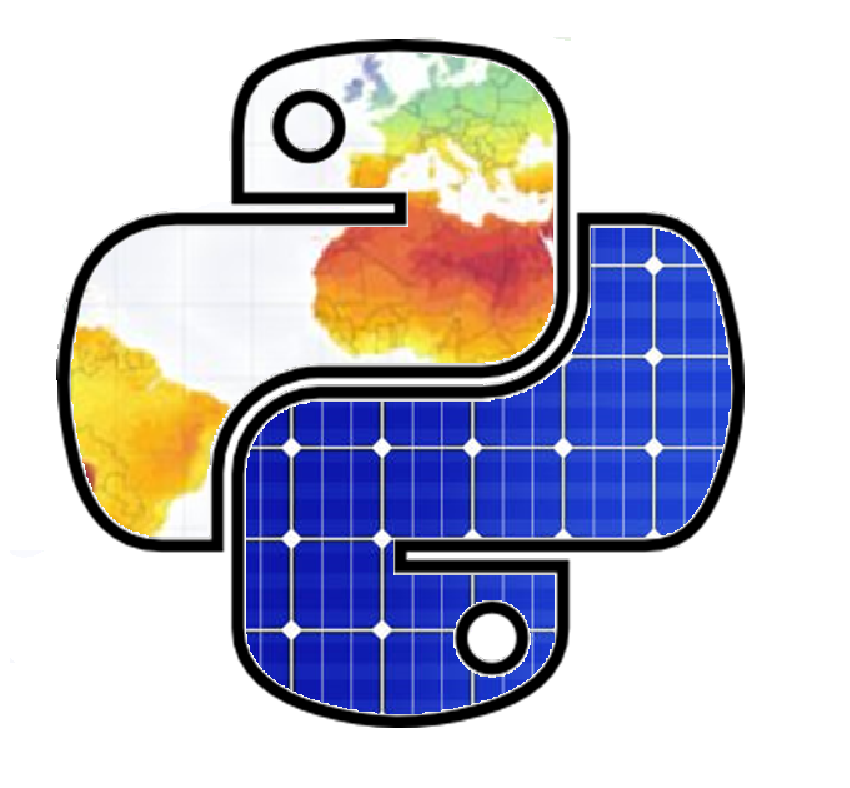Time shift#
Time shifts in irradiance data is common, e.g., due daylight savings, incorrect timezone, or drift in datalogger timing.
Incorrect timezone#
First, let’s take an existing dataset and purposefully set an incorrect timezone in order to investigate how this can be detected.
import numpy as np
import pandas as pd
import matplotlib.pyplot as plt
import matplotlib.dates as mdates
import pvlib
# sphinx_gallery_thumbnail_number = 2
filename = '../notebooks/data/solar_irradiance_dtu_2019_extended.csv'
df = pd.read_csv(filename, index_col=0, parse_dates=True)
# Remove timezone information
df = df.tz_convert(None)
# Set incorrect timezone
df = df.tz_localize('Etc/GMT-4', ambiguous='NaT', nonexistent='NaT')
# Calculate solar position using pvlib
location = pvlib.location.Location(latitude=55.7906, longitude=12.5253)
solpos = location.get_solarposition(df.index)
df['zenith'] = solpos['apparent_zenith']
# Calculate Global Horizontal Irradiance (GHI) from Diffuse Horizontal
# Irradiance (DHI) and Direct Normal Irradiance (DNI) using the closure
# equation.
df['ghi_calc'] = df['dhi'] + df['dni']*np.cos(np.deg2rad(df['zenith']))
# Compare the calculated and measured GHI:
df.plot.scatter(x='ghi', y='ghi_calc', s=0.1, alpha=0.1, grid=True)
plt.show()
In the above plot the measured and calculated GHI should ideally lie on a stright line. Clearly this is not the case, but rather there are distinct oval features, which is a common indication that the timezone is incorrect.
2-D heat map visualization#
Another very useful way of detecting time offset is to visualize the irradiance data using a heat map with the hour of day on the y-axis and the date on the x-axis.
# Calculate sunrise/sunset for the entire period
days = pd.date_range(df.index[0], df.index[-1])
sunrise_sunset = location.get_sun_rise_set_transit(days)
# Convert sunrise/sunset from datetime to decimal hours
sunrise_sunset['sunrise'] = sunrise_sunset['sunrise'].dt.hour + \
sunrise_sunset['sunrise'].dt.minute/60
sunrise_sunset['sunset'] = sunrise_sunset['sunset'].dt.hour + \
sunrise_sunset['sunset'].dt.minute/60
df['hourofday'] = df.index.hour + df.index.minute/60
# Create dataframe with rows corresponding to days and columns to hours
df_2d = df[['ghi']].set_index([df.index.date, df.hourofday]).unstack(level=0)
# Calculate the extents of the 2D plot [x_start, x_end, y_start, y_end]
xlims = mdates.date2num([df.index[0].date(), df.index[-1].date()])
extent = [xlims[0], xlims[1], 0, 24]
# Plot heat map
fig, ax = plt.subplots()
im = ax.imshow(df_2d['ghi'], aspect='auto', origin='lower', cmap='jet',
extent=extent, vmin=0, vmax=1000)
# Plot sunrise and sunset
ax.plot(mdates.date2num(sunrise_sunset.index),
sunrise_sunset[['sunrise', 'sunset']].to_numpy(),
c='r', linestyle='--', lw=2)
# Add colorbar
cbar = fig.colorbar(im, ax=ax, orientation='vertical', pad=0.01, label='GHI [W/m$^2$]')
# Format plot
ax.set_xlim(xlims)
ax.set_yticks([0, 6, 12, 18, 24])
ax.set_ylabel('Time of day [h]')
ax.set_facecolor('grey')
ax.xaxis_date()
ax.xaxis.set_major_formatter(mdates.DateFormatter('%b'))
plt.show()
In the above heat map the red lines represents sunrise and sunset times. It can be noted that the non-zero irradiance values are not all contained within the daytime period (between sunrise and sunset). This, is a clear indication that there is a timezone offset. Shifts in time due to daylight savings can also be detected using this method.
